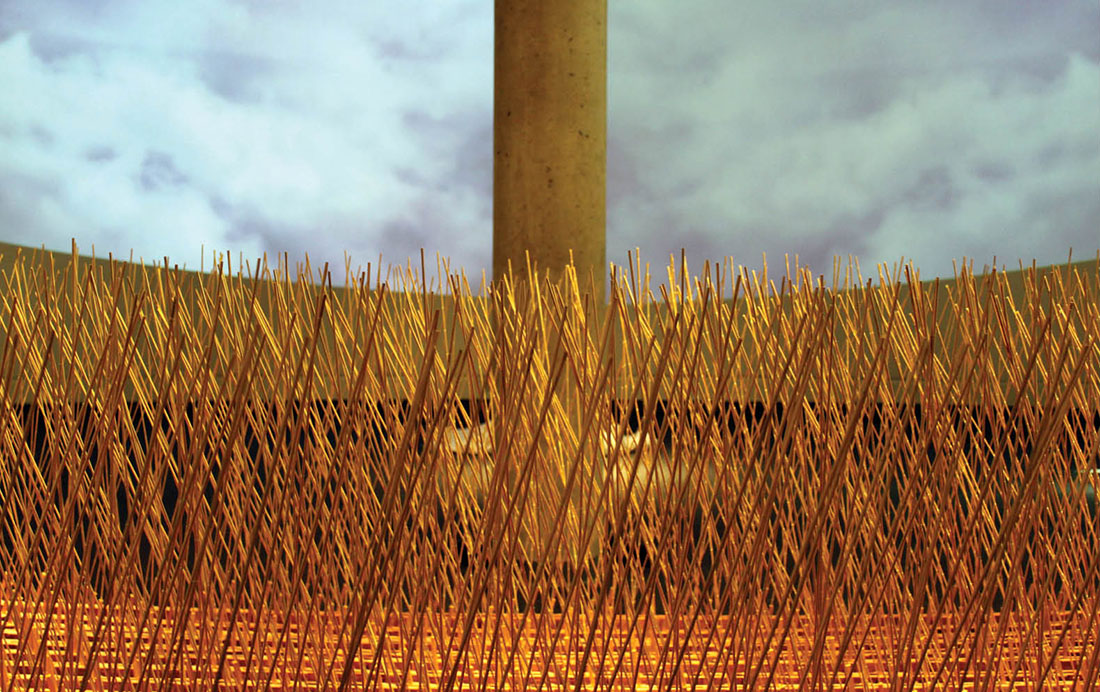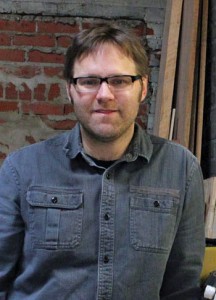
Does a viewer hear a work of art? Judging from the quiet experienced in most museums, most would answer no. One can almost hear the joke: If a sculpture falls in a forest, does it make a sound?
If you’re looking at the sculpture of John Powers, BA’01, it definitely does. Sound, mechanics and visual effects all play a role in creating an experience for the viewer, one that is completely open to interpretation.
During the 14 years since the 2001 Hamblett Award winner first exhibited the pieces that began his professional career, Powers’ work has evolved in both practical and philosophical ways. “All the work I did at Vanderbilt and for Hamblett was pretty small,” he says. “Those pieces were a product of where I was at the time, in terms of my work space.
“Looking through the lens of 14 years, the other big change is that the work has shifted to become more about an experience than an illustration of an idea. They’re immersive, kind of like installation, but still objects placed in space.”

Powers’ sculpture frequently employs a combination of media, and they almost always are kinetic in some way. His 2010 work “Elysium” incorporates sound, video, and reeds on a mechanism attached to an old Smith Corona electric typewriter. As the reeds move, the keys on the typewriter are activated. “This is the most perfect moment” is repeatedly typed onto paper that cascades to the floor.
“[‘Elysium’] paints the picture for a lot of the work that’s going on right now,” says Powers. “Many of the pieces incorporate sound produced by [kinetic] mechanisms. It goes back to an interest in music from as long as I can remember.
“One of the things I’m very interested in with sound is that, if it isn’t a voice or a nameable sound, there’s an abstract quality to it. It puts you into a constellation of ideas. You hear that sound, and it’s birds. Other people hear it, and it’s frogs in a marsh or whales under the ocean. All those ideas jibe with the landscape that’s being created. They’re open to interpretation, and that’s important for [the viewer] to take ownership of their experience of the work.”
Powers’ work is not only kinetic, but technically proficient and beautifully finished. As a child his interest in figuring out how to build and make things work mechanically was fed by watching his father, a contractor.
“I don’t know if I embraced it or inherited it genetically, but that desire to take apart things and see how they work was there early on,” he says. “I brought that with me to Vanderbilt, and when I found myself in Cohen in Michael Aurbach’s sculpture class, that moment was when I realized this is where it all fit together.”
See “Elysium” in action:
Elysium from john douglas powers on Vimeo.